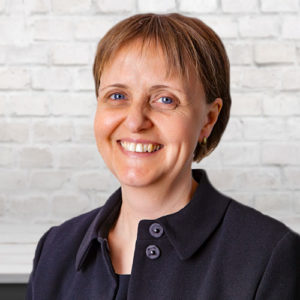Clive Flashman has a longstanding interest in using health tech to engage patients and improve safety. He argues that to make real progress, the NHS needs to start taking a systems view, rather than a tactical view, of its adoption.
Clive Flashman’s interest in health tech goes back a long way; and his interest in capturing, storing and – most importantly – using data to inform change goes back even further.
Back in the late 1990s, he helped to set up and run a knowledge management department for one of the ‘big five’ management consultancies and in the early 2000s he moved to the brand-new National Patient Safety Agency to do something similar.
“I was recruited to the NPSA as head of knowledge and information management, so I set up a team and led the design of the first National Reporting and Learning System,” he explains. “We needed to capture all the patient safety incidents happening in the NHS, and then use technology to analyse them and find solutions.”
The system was set up quickly; but worked incredibly well. In fact, it is only just being replaced. From the NPSA, Clive moved on to CSC (the company that bought iSoft’s electronic patient record business), and undertook a number of roles before taking charge of mobile strategy and solutions for its health and life sciences division.
Or, as he puts it: “Every solution that was, or could be, turned mobile.” For example: “We developed a patient-facing app that collects sources of health data for the patient to use. It was like an early version of a shared care record, but for patients, rather than clinicians.”
Patients can’t engage without the tools to do it
Clive has a very personal reason for being interested in both patient safety and patient information. Between his consultancy job and his NPSA role, his wife underwent spinal surgery and “didn’t recover well”. As a carer, he is well aware that health and care can be disjointed and that patients and their families need help to safely navigate the system.
“At CSC, I created a patient-facing app because most patients don’t know all the organisations involved in their care or what the next step is going to be,” he says. “The current drive to create capacity in outpatients by moving to ‘patient-initiated follow-up’ or PIFU is interesting in this context.
“At the moment, the only thing most patients are told is when their follow-up appointment is going to be. Now, some hospitals are just telling them to organise their own appointment, which might be face to face or over the phone.
“But for proper patient-initiated follow-up, they would need to really understand their condition, and when follow-up is appropriate, and what kind of support is available, and how to access it. So, as things stand, the NHS is asking some patients to take accountability for their care without giving them the tools to do it.”
Where’s the funding model for IT investment?
Today, Clive is an independent consultant, with dedicated time set aside to support the charity Patient Safety Learning, where he is chief digital officer, and the app evaluation service ORCHA, where he is director of strategy.
From this vantage point, he acknowledges that technology has come on a long way over the past decade. Any number of companies have developed portals, personal health records, digital outpatient platforms, remote monitoring and virtual ward solutions that could give patients the wayfinding information they need.
Unfortunately, he argues, the financial incentives to get this information into the hands of professionals and patients are not well aligned. “We now have access to GP records, which is good, and we have shared care records coming through, which will help,” he says.
“But if the future is integrated care systems, we need to start asking what that looks like from a patient perspective. For example, if you are discharged from hospital onto a virtual ward, and there is a problem, how do you know who is going to respond?
“You might well assume it will be someone from the hospital – why wouldn’t you? But it’s equally likely to be someone from a community team. And you might assume they will have all the information they need – why wouldn’t you? But they might not.
“It all needs to be a lot more joined up.” Instead, from March, the NHS wants to get back to Payment by Results which, historically, has been a driver for trusts to do their own thing and to drive up activity.
“It seems that nobody has successfully thought through the reimbursement model for keeping patients with complex, long-term conditions out of acute care and off the waiting list. Until that is resolved, I don’t think the new model will work properly – and there won’t be the right incentives in place to invest in the IT required.”
Where is the impactability modelling?
Money isn’t the only problem, though. If anything, a bigger challenge for integrated care boards, trusts, and other providers, is to find out what is available – and to decide what will work for them.
Take ICBs, which have a remit to use population health management techniques to address inequality, public health issues, and system challenges. Population health starts with risk stratifying a population and then identifying a cohort of patients who may be at risk (of a hospital admission, or developing diabetes, or whatever issue the ICB is interested in).
Then, the idea is to apply an intervention to that cohort. At which point, Clive argues, things break down “because nobody is doing the impactability modelling” that will tell ICBs whether a proposed intervention is likely to have the impact they want it to have on the population segment they want to support.
“The result is that an app vendor can come in and say ‘I have a fantastic app to address your issue’ but the ICB medical director can’t say ‘show me the impact compared to where we are now or your nearest competitors.’ The vendor might have some case studies, but in the absence of impactability modelling, there is really no good way for the ICB to choose between one approach and another.”
Clive would like NHS England – or, perhaps, a well-funded innovation body such as the Accelerated Access Collaborative – to take on this job, for example by using the kind of virtual populations that are increasingly used to assess the likely performance of new drugs in the pharma industry. Even some bake-offs or hackathon-style events would help NHS commissioners and IT directors.
“It would also help companies, because they would be able to prove what they were saying. Or, perhaps, they might get feedback saying ‘you failed on these points’ and they could go away and improve their offering,” Clive says. “Overall, the result would be more solutions that are market ready for the NHS. We’d be in a better position to buy high quality products and, just as importantly, to avoid spending time and money on sub-optimal ones.”
Closing the learning loop
Returning to the safety point, Clive would also like to see much more evaluation of digital technologies in action. As things stand, organisations and suppliers are supposed to complete a clinical safety case before implementing a new intervention.
Then, they’re supposed to do it again a year after launch, to check that everything is working as planned, and no new, unmitigated risks have arisen. “I would bet a month’s salary that most interventions are not re-evaluated,” he says. “Even though that re-evaluation is critical for patient safety.”
Other safety critical industries, he points out, not only go around this kind of ‘learning loop’, they do ‘double loop’ (where any change is, itself, evaluated and re-evaluated). Taking all this together, he argues that what the NHS is missing is a systems view of the adoption and use of technology.
At the moment, national funding is announced for programmes that are focused on deploying a particular kind of IT system, rather than on its potential impact, while local organisations are given policy directives and left to negotiate a fragmented market for the technology to deliver on them. To make things even more fraught, programme funding can be revised and diverted to other priorities, and policies or the priority given to them can change.
The need for a systems view, not a tactical view of tech adoption
Addressing all this would require a stable strategy environment. “I’d like to see NHS England made properly independent of government, like the Bank of England,” Clive says. “That way, politicians couldn’t come in and set things up only for new people to arrive and dismantle them a few months later.
“We also need consistent funding and policy, and to make sure that we’re making the most of the resources that we have. At the moment, there is a lot of discussion about the need for a workforce strategy, but there’s no point having one unless we better understand how NHS staff are working, and whether they are doing the tasks relevant to their grade, and if not how we can optimise this.
“It should be possible to work that out, because it will all be recorded in the EPR. So we should be able to analyse that activity, and work out where we are, and where we need to put our reform and investment effort. Then, we could take a rational, systems view of adopting new technology to support change, efficiently and safely.”



